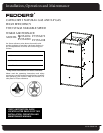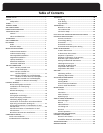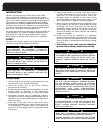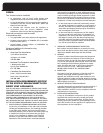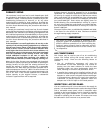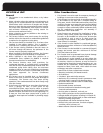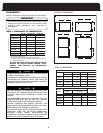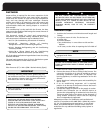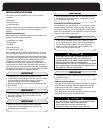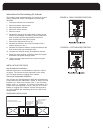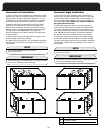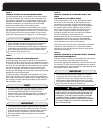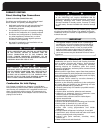
Other Considerations:
1. This furnace is not to be used for temporary heating of
buildings or structures under construction.
2. If this furnace is to be used with air conditioning and is
t
o be installed in an area over a finished ceiling or
living area, install a field fabricated auxiliary drain pan
under the furnace to protect that area from accidental
condensate spills. The auxiliary pan should be large
enough to collect accidentally spilled condensate from
t
he air conditioning evaporator coil assembly if
applicable. Follow local codes.
3. These furnaces are approved for installation in attics,
alcoves, utility rooms, closets and crawlspaces. If this
furnace is to be installed in a utility room, be sure that
it is located in such a way as to allow access for
servicing or the removal of any other appliance, (hot
water heater, for example).
4. If the furnace is to be installed in a residential garage,
the burners must be a minimum of 18 inches (460 mm)
above the floor
.
5. If the furnace is to be installed in a commercial (repair)
garage, the burners must be a minimum of 4.5 feet
(1375 mm) above the floor.
6. The furnace must be protected from physical damage
by metal barriers or other acceptable means.
7. If the furnace is to be located in an area where the
combustion air is laden with chemical compounds such
as bromine, chlorine or fluorine, as may be found in
swimming pool chemicals, laundry detergents, etc., use
outdoor air for combustion. These compounds when
exposed to flame, form acids, which attack the heat
exchanger and other components.
A partial list of these contaminants includes:
• Aerosols, particularly CFC based aerosols
• Air fresheners
• “Airplane” glue and similar cements
• Ammonia, as is commonly found in permanent wave
solutions used in women’
s hair dressing salons
• Anti-static fabric softeners used in clothes dryers
• Carbon tetrachloride
• Chlorinated cleaners and waxes
• Chlorine and bromine based swimming pool
chemicals and treatments
• De-icing salts or chemicals, rock salt, etc.
• Dry cleaning solutions such as perchloroethylene
• Halogen based refrigerants including R-12 and R-22
• Hydrochloric acid, muriatic acid, or other acid based
masonry washing compounds
• Polyurethane and similar derivatives fumes
• Printer’s inks, paint removers, furniture strippers,
varnishes, varsol, toluene, etc.
• Water softener salts and chemicals
LOCATION of UNIT
General
1. The furnace is not weatherized. Select a dry indoor
location.
2. Select a location where the exhaust and combustion air
p
iping can be routed between the furnace and their
terminations with a minimum of lengths and fittings.
Be sure to check that the proposed termination location
will meet code requirements with respect to location
and minimum clearances. (See venting section for
m
inimum and maximum limits.)
3
. Select a location as near as possible to the existing or
proposed duct system.
4. The furnace location must permit access for servicing,
and be within the clearance to combustibles guidelines
as marked on the appliance rating plate.
5. The furnace should be installed on a firm base when
installed in the upflow position. This is typically a
concrete floor if installing the furnace in a basement.
6. If the furnace is being installed so that the return air
will enter through the bottom, the perimeter of the
furnace must be properly supported.
7. When installed in the horizontal position, the furnace
may be supported from the bottom, or suspended.
8. When installed in the down flow position on a
combustible floor, subbase kit #30476 is required
(contact manufacturer for availability).
9. The furnace location must have provisions for
condensate drainage. If a suitable drain is unavailable
near the furnace, a condensate pump must be used. The
condensate pump drain tubing must not terminate
outdoors; similar to some air conditioning condensate
installations. Be sure to select a condensate pump that
has been approved for furnace condensate
applications.
10. The furnace must be installed level, or tilted slightly
down in the front, to allow for the proper drainage of
condensate. The furnace may shut down during
operation if the condensate does not drain freely away
from the furnace.
11. If the furnace is installed in an area where freezing may
occur, a garage, an attic, a crawl space or any
unconditioned space, steps must be taken to protect
the condensate trap and drain line from freezing. One
possible measure could be to use a self-regulating 5 or
6 watt per foot heat tape covered with a jacket of
insulation. Heat tapes are available in plumbing supply
houses.
5



